A tiny ask before I get started: I would love for this story to be shared with climbers and mountaineers and hikers in the PNW, so please feel free to share this! I don’t receive any compensation for likes or views on this page, but I would LOVE for Jack’s story to get enough traction that it is never lost or forgotten. Thank you!
Ok, here we go…
Dear Kula Diaries,
Many many years ago, I saw a photograph of a lake, and I gasped — it was the most beautiful, idyllic place that I had ever seen. The lake itself was tiny, but it appeared to be an infinity pool that reached into the incomprehensible depths of the mountains. I looked at the caption beneath the photo: Kool-Aid Lake, North Cascades, it said.
“Someday, I’m going to visit this place,” I promised myself. I looked again at the curious photo, “I wonder how it got that name?”. A quick Google search yielded no results. And yet, still, I wondered: with such an odd name, didn’t it have to have a story”. I guessed that it would probably remain a mystery.
Note: if you’re interested in reading about the Ptarmigan Traverse, this article has some beautiful photos by PNW Photographer Stephen Matera.
Many years later, armed with significantly more mountaineering skills, I found myself setting off on the first few steps of the fabled Ptarmigan Traverse, a 40+ mile mountaineering objective that meanders through some of the most remote terrain in the interior of the North Cascades. The Ptarmigan Traverse begins at Cascade Pass… and ends at the Downey Creek Trailhead. When my friend Brenda and I had planned to complete the traverse, the road to the Downey Creek Trailhead was closed, which meant that we had an additional 9 miles of road-walking to complete the journey. Two weeks before our trip, we biked down the closed road… hid our bicycles in the woods and locked them to a tree with a note on them that said, ‘PLEASE DON’T REMOVE! WE ARE CLIMBERS AND WE WILL BE BACK SOON!’. We jogged back to the car, and in those arduous 9 miles of jogging, I nervously anticipated the journey that we were about to embark upon.
More than anything, the Ptarmigan Traverse is… in a word… committing. Once you’re out there, you’re out there. There are no bail out points, other than going back to where you started, or finishing the traverse. The terrain is steep and treacherous at points. During the year that we completed the Ptarmigan Traverse, the snow levels were very high, which meant that many of the sections that normally included easily navigable trails, now featured steep traverses across snow slopes with decidedly terrifying exposure and very distinct, ‘No Fall Zones’.
I had dreamed of doing the Ptarmigan Traverse for many years, and so when we finally hoisted our overly-heavy packs after a break at Cascade Pass and began to head towards Kool-Aid Lake, it felt like a dream come true. As we hiked, the terrain became almost immediately intimidating — the slope was steep and angled, and since it was all snow, I tried to focus my mind on taking the next step — instead of envisioning myself careening off the cliff.
Our first objective was Cache Col, a small saddle at the top of a steep snowfield. After making it to Cache Col, we emerged into the depths of the North Cascades and descend down (more) steep snowfields to the fabled Kool-Aid Lake. As we approached the spot, I was momentarily disheartened: the lake was still frozen over and entirely covered with snow. I looked longingly at the gentle depression where I knew the lake was nestled, and I felt a moment of disappointment, I guess I wasn’t going to get to see the lake after all. I had hoped that if I saw it in person, maybe I’d get a clue or a hint to the origin of its name: Was it shaped like a pitcher of Kool-Aid? Did the lake have a reddish Fruit Punch tint in the alpenglow at sunset? I would never know.
As we approached the area of the lake, we saw a small waterfall peeking out of the snow — “We need to filter water!”, I said. I could see melted footprints in the snow from another party — presumably in front of us — who had walked up the snow to the waterfall, probably to filter water as well. It looked like an easy, safe spot to grab water, and so I can’t explain why, as we walked toward that spot, we made a last second decision to traverse a bit further to a more awkward location: a tiny stream that was gurgling out of clumps of moss that managed to push their way out of the quickly melting summer snow. We dropped our atrociously heavy packs on the snow with a thump and positioned ourselves awkwardly on the sideways slope to begin the process of filtering water. As we got situated, we suddenly heard a terrifying cracking noise — the unmistakable sound of tumbling rocks… and then, silence. A few moments of suspended tension hung in the air as we held our breath until…. WHOOOOOMMMMF!! We watched in horror as a giant rock tumbled off the slope above us and landed directly on top of the footprints leading to the small waterfall — the exact spot where we would have been standing if we hadn’t inexplicably decided to walk just a tiny bit further. The rock smacked into the snow so hard that it collapsed down into the melted creek and out of sight. A few moments later, another giant rock tumbled down the slope and joined it.
Two giant rocks. Both landing violently on the exact spot where we would have been standing… if not for one miniscule decision to hike just a tiny bit further. My heart dropped: What had we gotten ourselves into? Suddenly, I felt very, VERY small.
After we filtered water, Brenda and I slogged through the final snowfield to the spot where, if it hadn’t been covered with snow, we would have seen the infamous Kool-Aid Lake. We didn’t say much about the rock incident, but I knew that it had shaken both of our nerves: maybe if we didn’t mention it, we could pretend it hadn’t happened. As I sat at our campsite that night, I had a pit in my stomach as I tried to contemplate the challenges that we would face over the next few days. I had dreamed of doing the Ptarmigan Traverse for so many years, and now, I was surprised to find that I felt scared and lonely — with a twinge of homesickness. Questions swirled in my mind: Why was I doing this? Why couldn’t I just be content at home? The sunset at Kool-Aid Lake was stunning, but I felt confused as I sat next to this snow-covered lake that had a name I didn’t understand. Silently, I questioned whether or not I was worthy or skilled enough to be in this place. In addition to the origins of the name of this lake, it felt like there were too many variables on this trip that I didn’t know. My mind swirled with an endless torrent of ‘what'-ifs’. As I settled into my tent that night, I decided that I could just take it a step at a time. Maybe, in some way, the rest of the journey would help me uncover the answers.
The days that followed did not get any easier. I stumbled down a steep snow slope, and thankfully caught myself with my axe. We spent a day at Yang-Yang Lakes, socked in with heavy fog… and the following day, when we needed to make forward progress, the conditions had only worsened. At the time, we didn’t have fancy GPS programs on our phones — just an ‘old fashioned’ GPS device that showed dots on a map, barely useful for navigational purposes. We stumbled our way up and over glaciers, navigating unthinkable obstacles… but we kept going. We found another group who was also struggling with the navigation, and we teamed up with them as we ascended the La Conte Glacier and then plodded our way down to the yawning expanse of the South Cascade Glacier — a giant glacier that looks like the impossibly flat tongue of a snow giant.
In the end, we did complete the Ptarmigan Traverse. I wrote about it on a blog that I kept at the time in the following way:
With each passing step, I became acutely aware that we were nearing our destination. Each bend in the trail seemed to bring hope that the next bend would reveal the end of our hike. I had dreamed of this particular moment for so long – and here it was. We rounded a corner, and my eyes caught a glimpse of something that was out of place with the towering Douglas Fir trees – some plywood with a small peaked roof … a trailhead sign! I desperately wanted to say something to Brenda – I wanted to capture what it meant to me to be (safely) at the end of this journey with her, but I couldn’t find the words. Even if I had found the words, I don’t think that I could have spoken them – instead, I turned around towards her and smiled. She smiled back at me. I held onto that feeling and that smile as we took the final steps off the trail and onto the Suiattle River Road. I hold onto that feeling now, and every day, as I recall our adventure on the Ptarmigan Traverse and the friendship we have that made the journey so special and meaningful.
It’s been almost 14 years since I completed the Ptarmigan Traverse. Fourteen years. So much has changed in my life since then that it’s hard to even fathom the version of me that made that trek, and yet, it remains — to this day — one of my most profoundly meaningful and memorable trips. In particular, the first night at Kool-Aid Lake stands out to me as particularly special — a moment in which I felt vulnerable and small, but, also, decided to keep walking — into the unknown adventures ahead. Over the years, the memory of that snow covered lake haunted me — and I often remarked that visiting it as an actual, unfrozen lake was my, ‘unfinished business’. “One of these days,” I would jokingly threaten, “I’m actually going to see Kool-Aid lake.”
A few months ago, I felt a very strong desire to find ways in which I could serve my local community on a more meaningful level. My desire to do this was simple: I wanted to do service that was unrelated to Kula Cloth, but that provided something important to the people in my local community. As a Park Ranger, I had volunteered on a monthly basis to play my violin at local assisted living centers, and I felt a strong calling to find a way to do this again. I reached out to a local retirement center, but initially I didn’t hear back from them. Then, on a walk in my neighborhood one day, I crossed paths with my neighbor while she was driving home from work. She stopped her vehicle to chat with me, and I asked her how she was doing at her job as a baker. She looked at me and smiled, “Oh, I’m not doing that anymore, I got a job at a retirement community in town!”. I gasped as I told her that I had been trying to contact somebody about playing my violin for the residents. She loved the idea, and quickly put my request into motion, and a few weeks later, Aaron and I arrived at the center — violin and ukulele in hand for a performance.
To give the residents some context about my musical exploits, I brought my computer so that I could share a few of the Musical Mountaineer’s videos on their large TV screen. The entire hour of our time there was special and beautiful — and having the opportunity to perform with Aaron for this incredibly kind group of humans was truly a gift. At the end of the performance, a man named Jack approached me and started asking me some very specific questions about some of the mountainous locations that appeared in the videos, “Have you ever been to Cascade Pass? Or Cache Col?” I was momentarily shocked to hear somebody mention Cache Col — it’s such a specific and relatively obscure location that I knew he had to be a mountaineer. Excitedly, I responded to him, “Yes! I’ve done the Ptarmigan Traverse!” He paused for a moment before thoughtfully continuing with a grin, “Back in the 40s… and I can’t remember exactly when, but I think it was 1949… we climbed Magic Mountain, near Cache Col. And then, we walked down the other side and there was this little lake there — this unnamed, ‘nothing’ of a lake. We sat at the lake that day and drank Kool-Aid for lunch and then I took a piece of paper and attached it to a small stick. I wrote ‘Kool Aid Lake’ on the piece of paper and put it in the ground like a sign… and wouldn’t you know it? The name stuck.”
As I listened to Jack speak, I felt my heart start to race and I gaped, open-mouthed as he recalled this simple, innocent story. He couldn’t possibly have known what this lake meant to me… and yet, here we were — two souls, separated by 62 years of time, but connected by the exact same tiny lake.
“YOU NAMED KOOL-AID LAKE?!”, I stammered, in awe.
I was almost breathless with the excitement — what were the odds that, in the vastness of the entire universe, that I would somehow stumble across the mountaineer who actually named the lake that I had wondered about for well over a decade? “Does anybody else know that you named it?”, I asked. Jack looked at me kindly, “I don’t think so. I didn’t think it was a big deal at the time, and I never imagined the name would stick. All we did was drink Kool-Aid there for lunch.”
As I listened to Jack, I shook my head in disbelief. The staff at the facility were standing nearby as we spoke, and I was sure that they were beginning to question the seemingly disproportionate manner of my sheer excitement. In that instant, it felt like a tiny piece of a long lost mystery had suddenly clicked into place. The Ptarmigan Traverse might have been 40 miles long, but I had walked much further with the unanswered question of that spot. Out of all the people that I could have encountered… and out of all the people that Jack could have encountered with his story — the fact that we shared the knowledge of this one, very tiny, obscure lake in the middle of an off-trail route in the North Cascades seemed like the impossibility of impossibilities.
I’ve been back to retirement community a couple of times now to play my violin, and each time, Jack and I have shared stories of adventure and mountaineering. In the most unexpected and beautiful way, he helped me close the chapter on the unsolved mystery at Kool-Aid Lake. As it turns out, I didn’t need to visit Kool-Aid Lake to really see it. As I listened to Jack, I saw its infinity pool in his excited eyes. With clarity, I realized that seeing the lake again wasn’t the thing that I was being called to do. Instead, all along, the whisper of Kool Aid lake had been saying one thing: tell the story.
Knowing how Kool-Aid Lake got its name — and, against all odds, meeting the person who named it, feels like I was given a precious, priceless gem that was meant to be shared with others. This tiny alpine lake will call to many other mountaineers, as it did to me, but now, unlike me, they will know its simple, endearing story. This is a story of North Cascades history and lore that deserves to be told, and I’m deeply honored to be the one to share it. I love imagining all of the other climbers who will head out on their first night of the Ptarmigan Traverse. Like me, they might sit on a knoll at sunset feeling some nervous anticipation as they look deeply into the unknown. Except this time, they’ll know that this little lake was named by a kind man named Jack who drank Kool-Aid for lunch one day in this spot, many years ago. Knowing this, maybe they won’t feel as alone. And maybe, just maybe, that knowing will give them the feeling of belonging that they too are searching for.
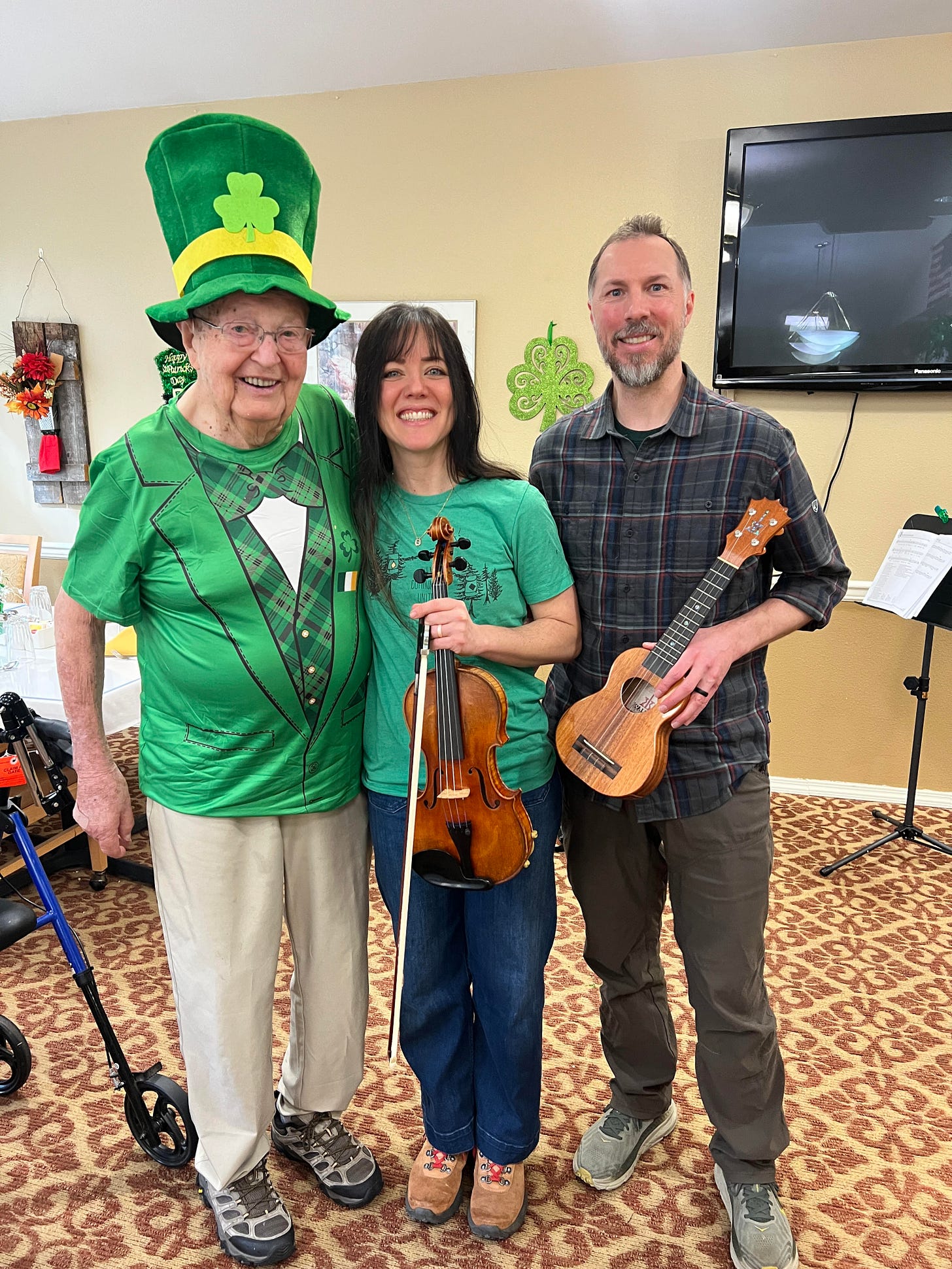
Friends, thank you so much for being here and for reading my words each week. It was such a true pleasure and honor to be able to write this story, and I am deeply grateful to the amazingly inspiring Jack Hansen, who gave me permission to write this story and tell the tale of naming Kool-Aid Lake.
I couldn’t help but think of this Rainer Maria Rilke quote as I wrote: “Be patient toward all that is unsolved in your heart and try to love the questions themselves, like locked rooms and like books that are now written in a very foreign tongue. Do not now seek the answers, which cannot be given you because you would not be able to live them. And the point is, to live everything. Live the questions now. Perhaps you will then gradually, without noticing it, live along some distant day into the answer.”
You are loved so much friends — thanks for being here.
Note: As I was writing this story, I became very curious about the first time that the name Kool-Aid Lake was used on a topographic map. Initially, the name of the lake was probably passed down from climber to climber, until it just ‘became’ what people called it — long after the origin of the name had been lost. I was able to look through the USGS historical database online, and I noted that the lake was either not visible and/or not named on maps prior to 1963. The USGS Topo Map of the area that was printed in 1963 is the first mention of the lake on a map that I was able to discover.







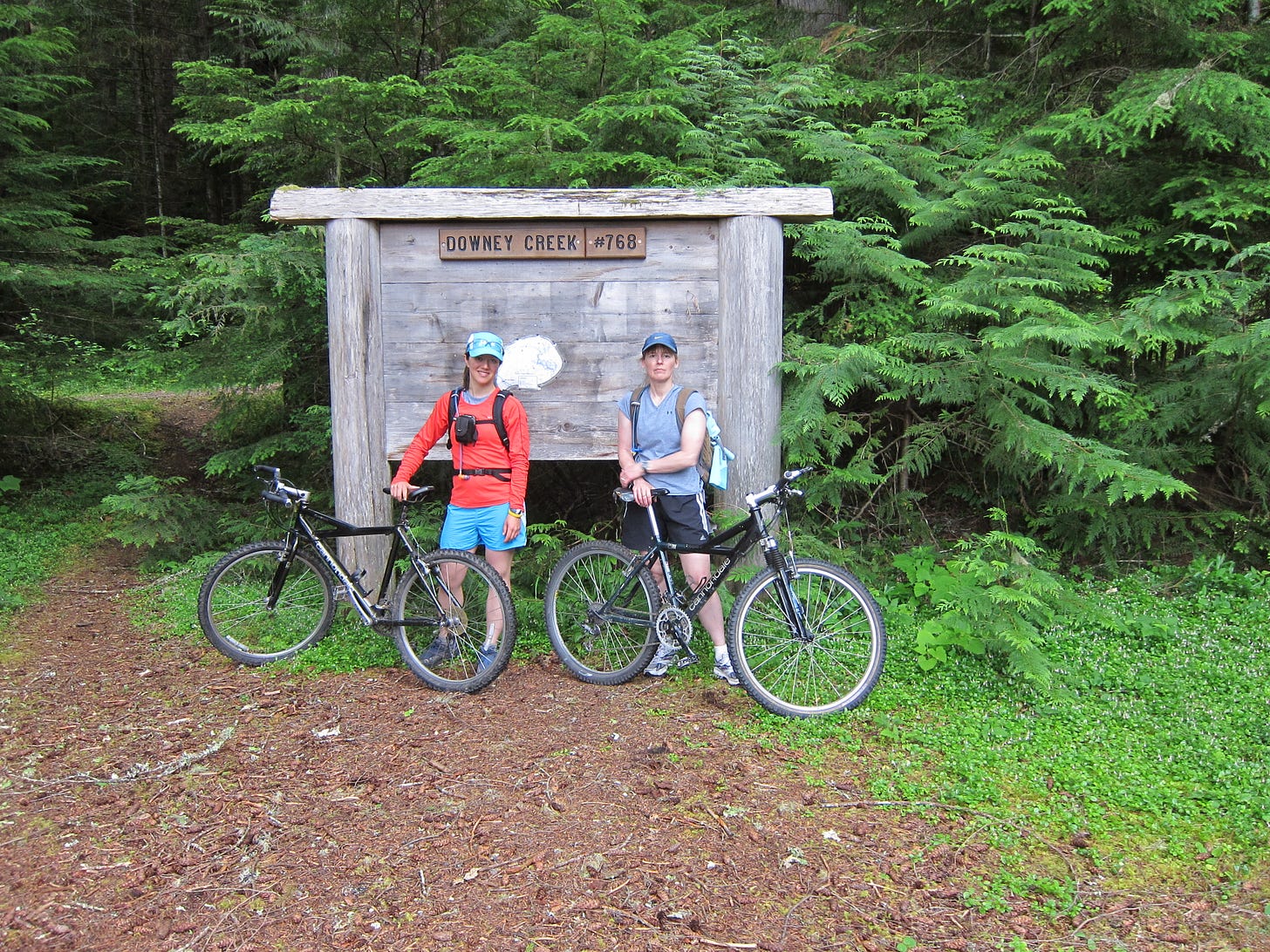

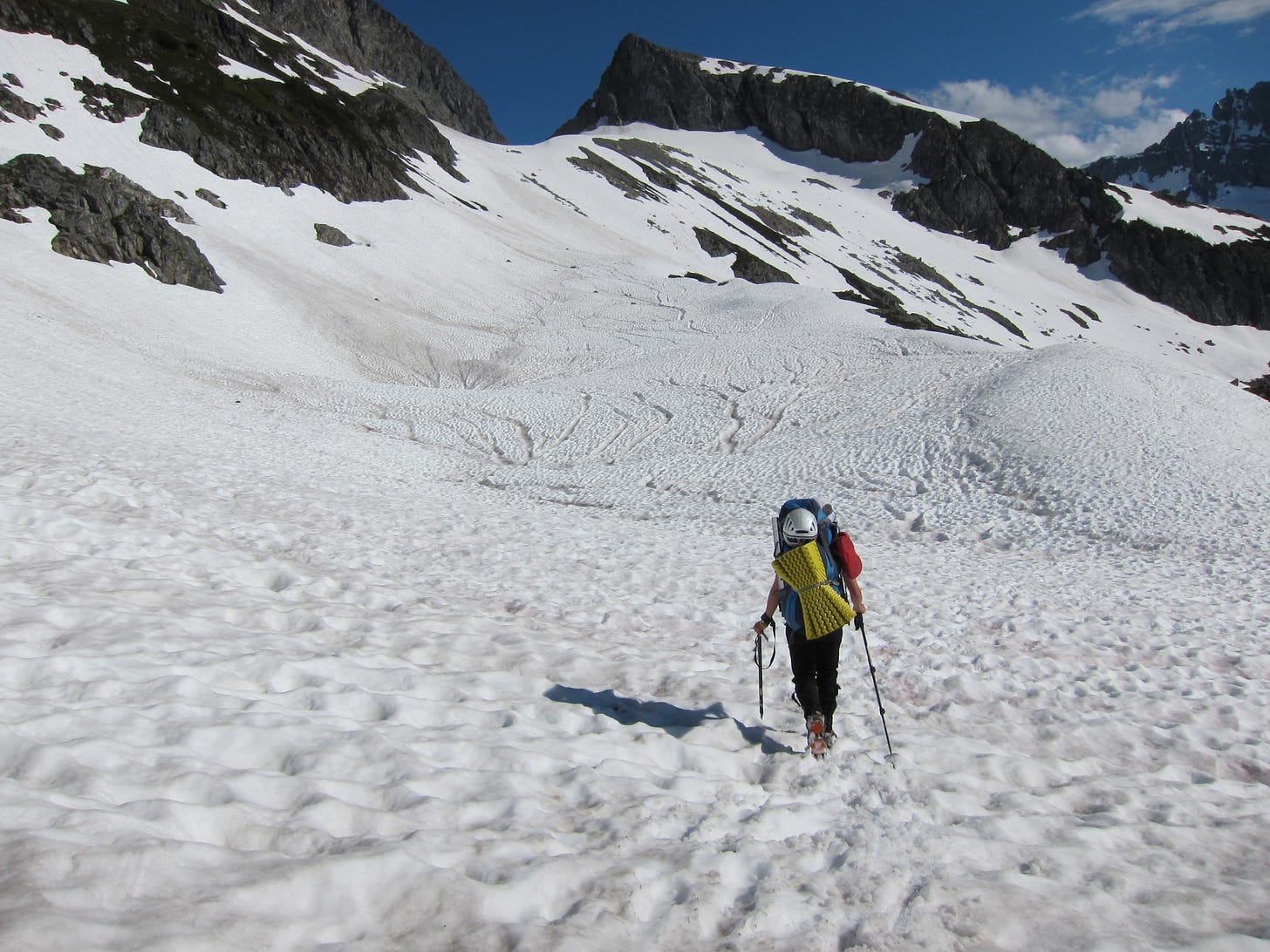
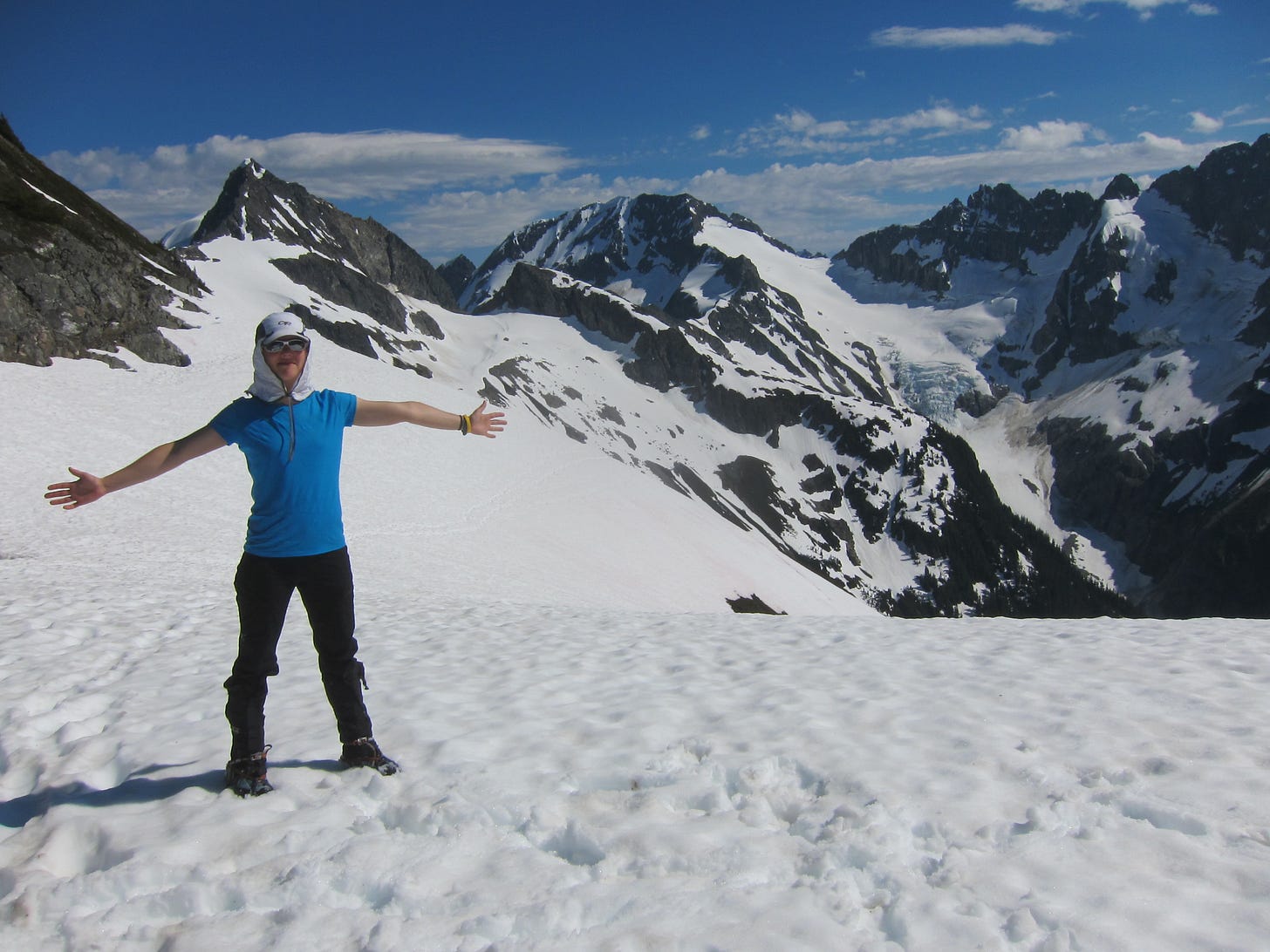
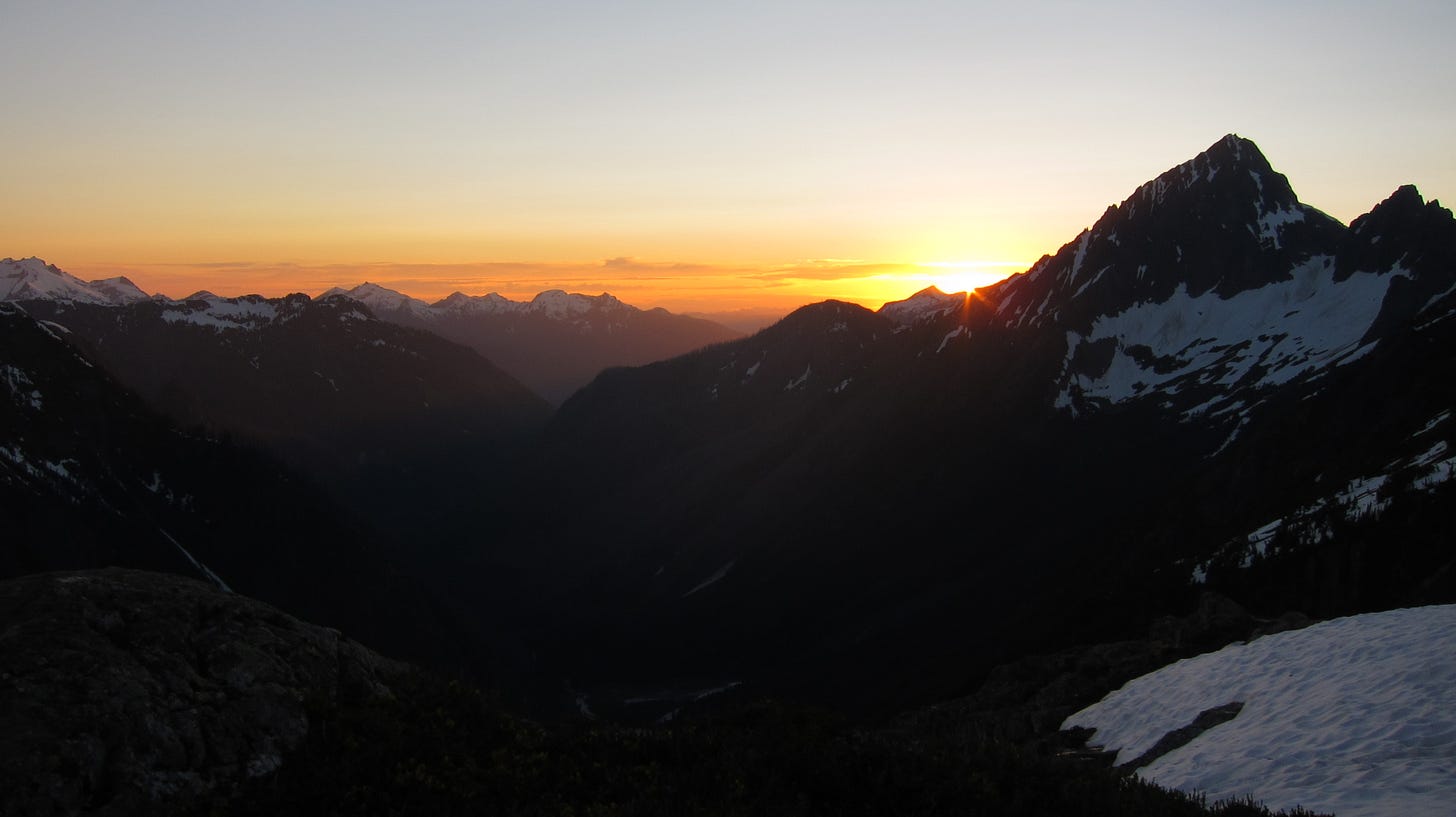
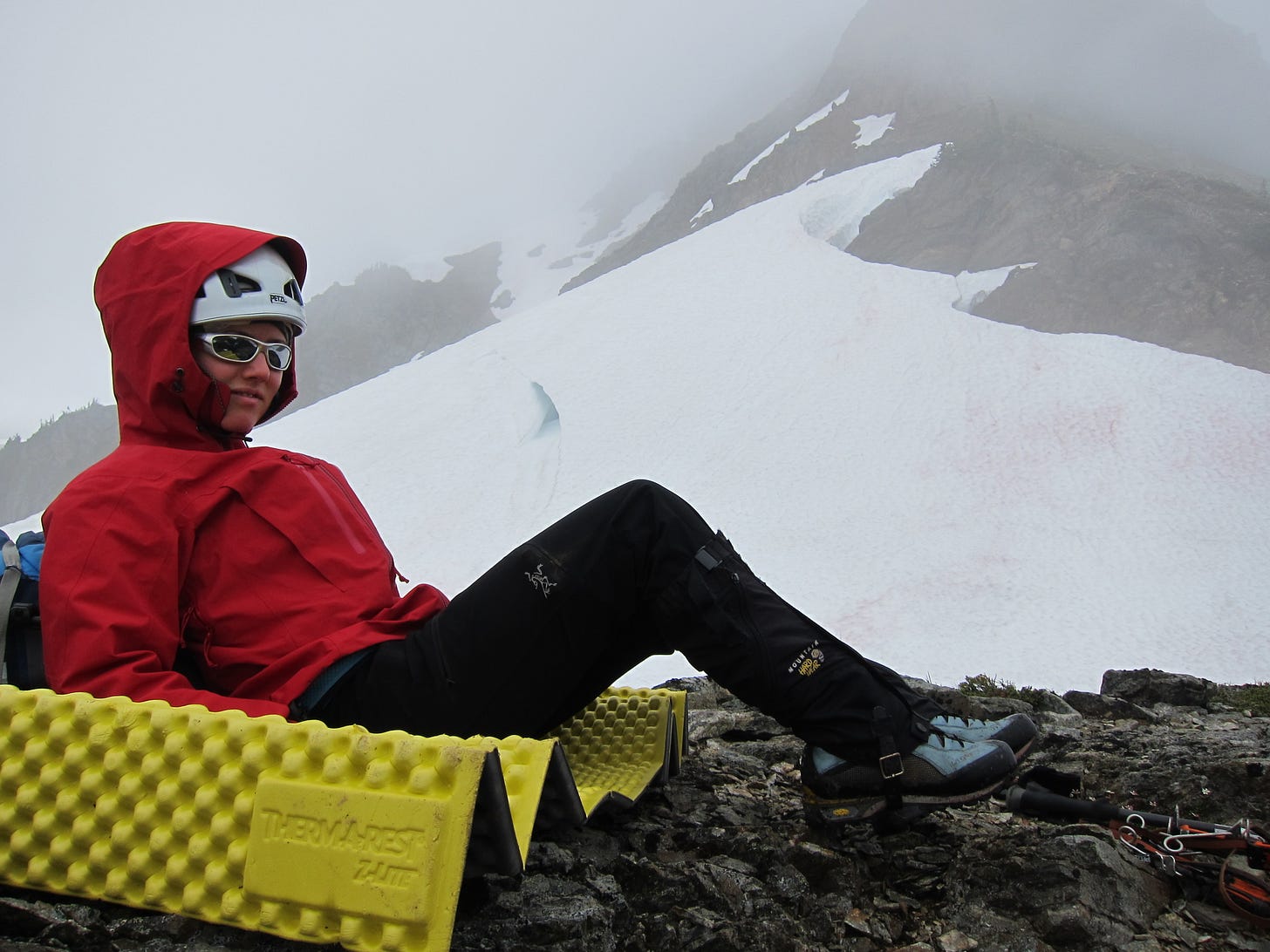
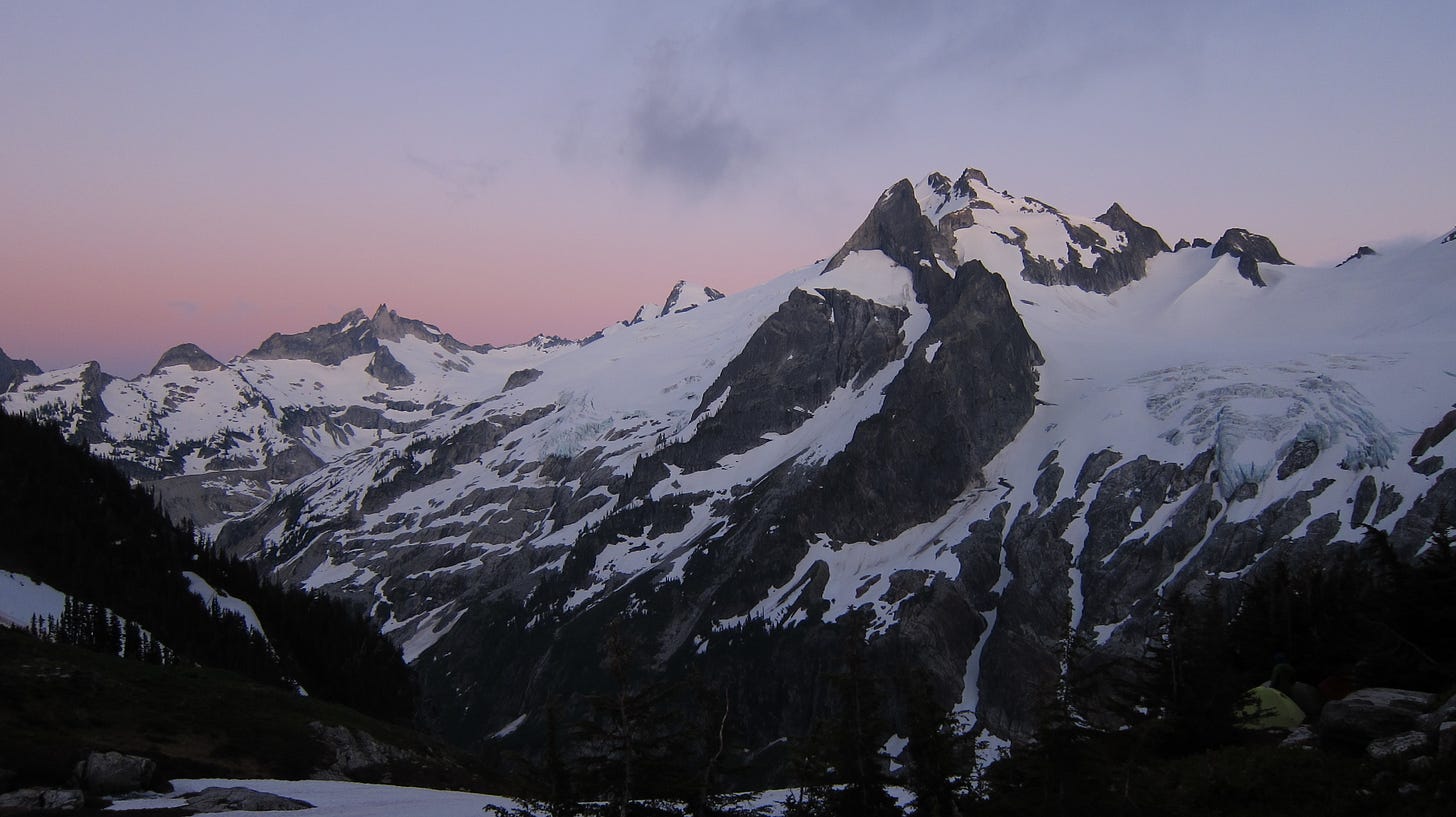
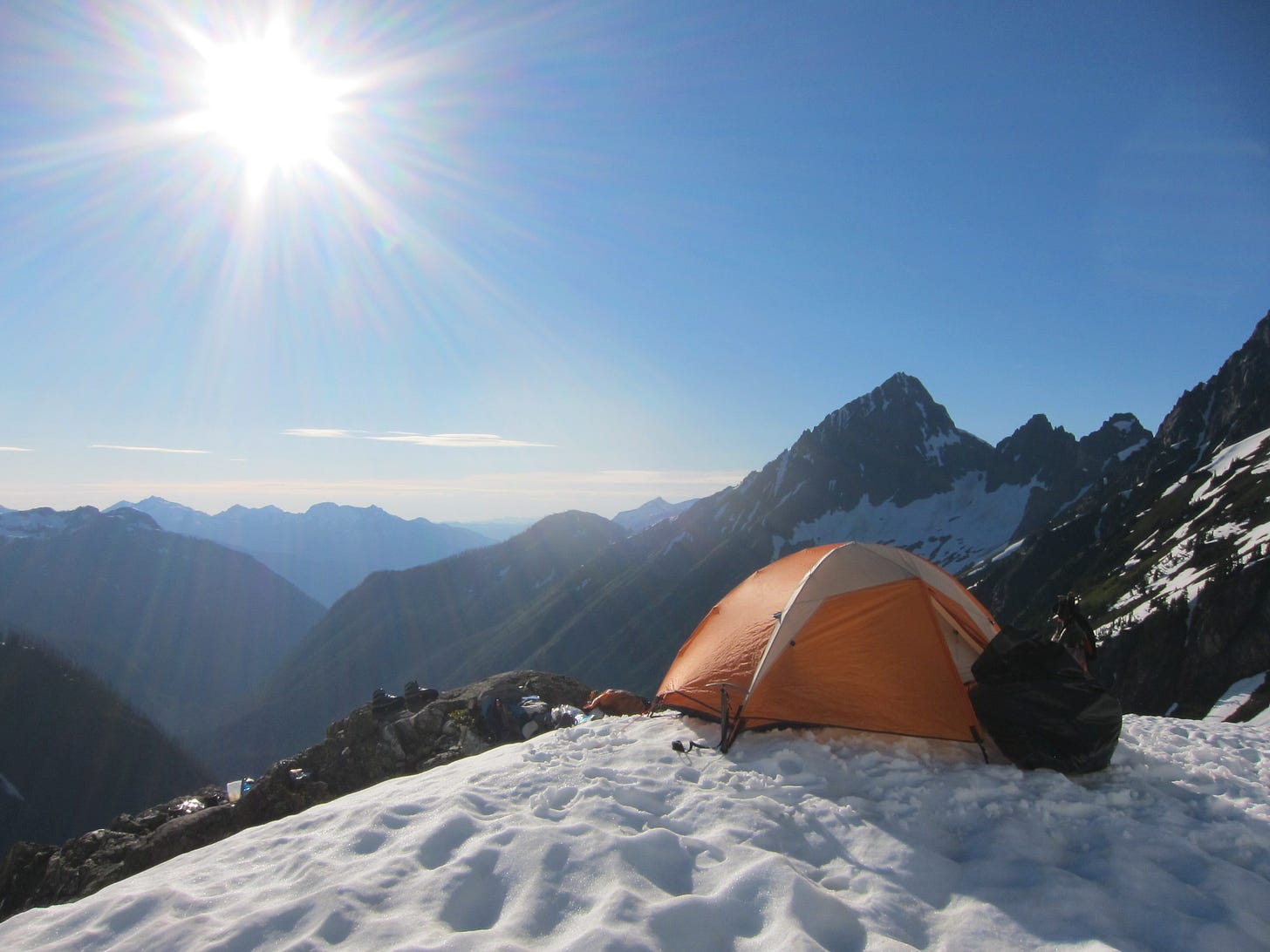
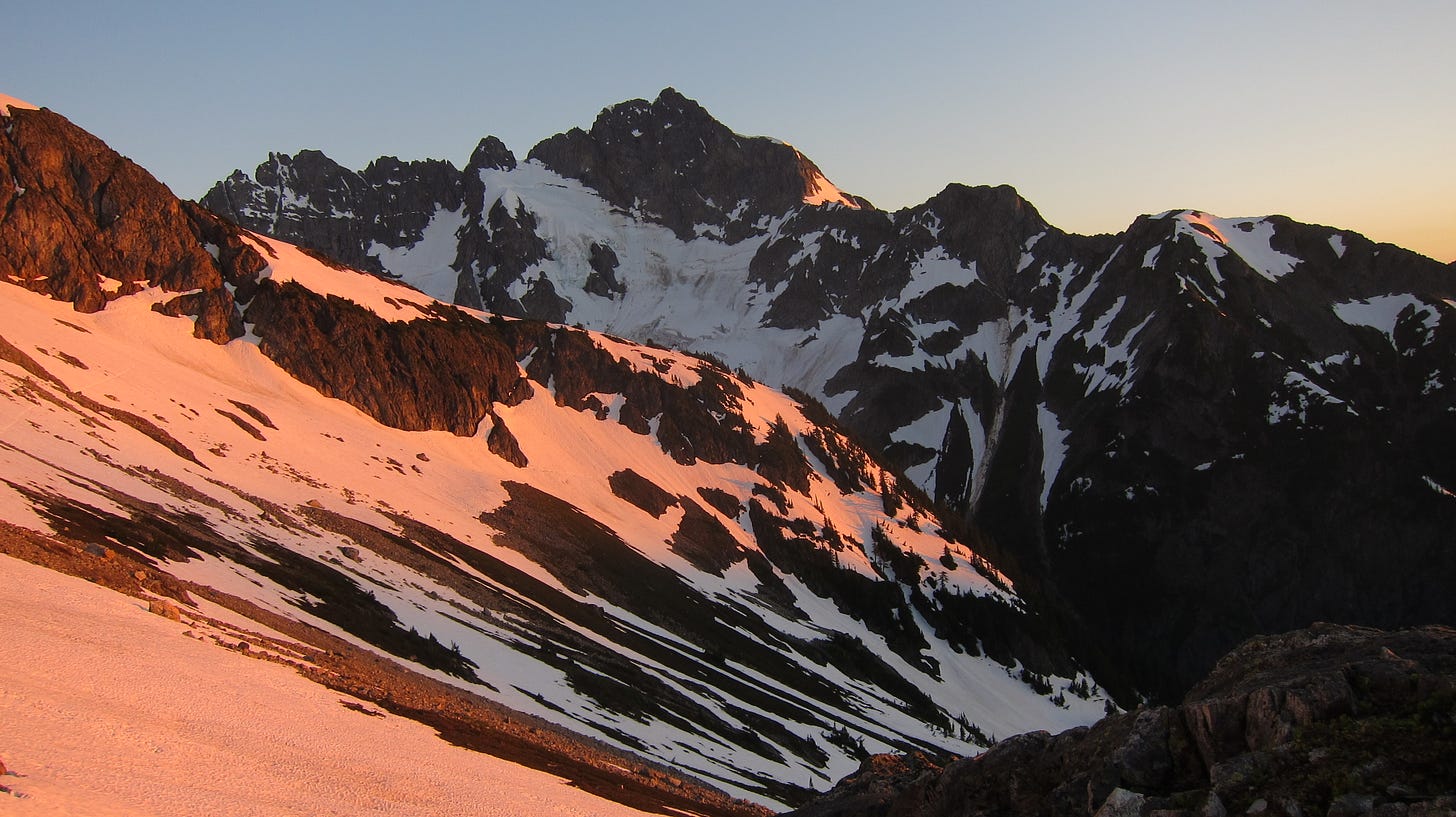
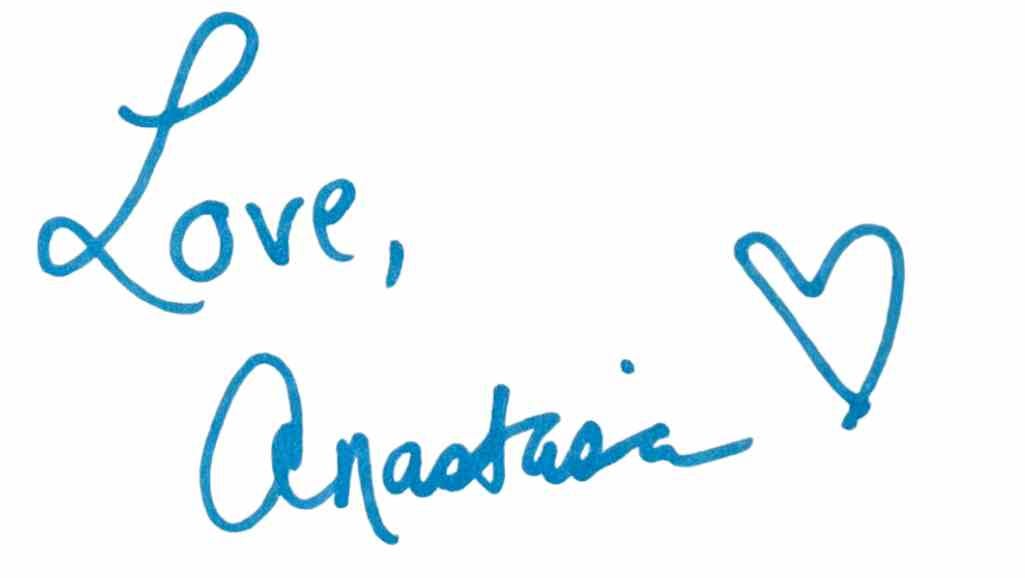

Oh my gosh, this has GOT to get reprinted in the Mountaineers magazine or the WTA magazine!!
I love everything about this story! To end it with the Rilke quote was perfect 💜